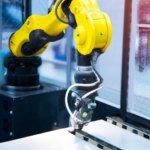As the world progresses towards a more technologically advanced future, artificial intelligence has become an increasingly important topic in the field of computer science. Among the various techniques used in artificial intelligence, deep learning is one of the most prominent and widely used methods. In this article, we will provide an introduction to deep learning and explain what you need to know about it.
What is Deep Learning?
Deep learning is a subfield of machine learning that involves the use of neural networks with multiple layers to model and solve complex problems. We call the neural networks used in deep learning deep neural networks (DNNs) because they have multiple layers that can range from a few to hundreds or even thousands.
DNNs can learn and improve their performance over time by using a process called backpropagation, which involves adjusting the weights of the connections between the neurons in the network. We can use this to recognize patterns and relationships in data, which allows the network to make predictions or classify new data.
Applications of Deep Learning
Deep learning has a wide range of applications in various fields, including computer vision, speech recognition, natural language processing, robotics, and many others. Some examples of deep learning applications include:
Image recognition:
One can use DNNs to recognize objects and patterns in images, making it useful for tasks such as facial recognition, object detection, and image classification.
Speech recognition:
We can train DNNs to recognize and transcribe spoken words, which we use in applications such as virtual assistants, speech-to-text, and voice-activated devices.
Natural language processing:
DNNs can be used to analyze and understand human language, which is useful for tasks such as sentiment analysis, language translation, and chatbots.
Robotics:
We can use DNNs to control and optimize the movements of robots, which is important for tasks such as autonomous navigation, object manipulation, and obstacle avoidance.
Training Deep Neural Networks
Training a DNN involves providing it with a large dataset of labeled examples and adjusting the weights of the connections between the neurons in the network to minimize the difference between the predicted output and the actual output. This process requires a lot of computational power and can take a long time, depending on the size and complexity of the network and the dataset.
To speed up the training process, various techniques have been developed, such as parallel computing, distributed training, and transfer learning. Transfer learning involves using a pre-trained model as a starting point for a new task, which can reduce the amount of training required.
Challenges in Deep Learning
Despite its many successes, deep learning also faces several challenges, such as overfitting, vanishing gradients, and the need for large amounts of labeled data. Overfitting occurs when a model becomes too complex and starts to memorize the training data instead of learning general patterns. Vanishing gradients occur when the gradients used in backpropagation become too small, which can slow down or prevent training.
We have developed various techniques, such as regularization, dropout, and batch normalization, to overcome these challenges.
Regularization involves adding a penalty term to the loss function to encourage simpler models, while dropout involves randomly disabling some of the neurons in the network during training to prevent overfitting. Batch normalization involves normalizing the inputs to each layer to prevent vanishing gradients.
Conclusion
Deep learning is a powerful and versatile technique that has revolutionized many fields of artificial intelligence. Its ability to learn and improve over time has made it a valuable tool for solving complex problems and making accurate predictions. However, it also faces several challenges that must be overcome to fully realize its potential. We hope this article has provided you with a useful introduction to deep learning and its applications.














Mind-expanding content! AI Tools shows how AI enhances technological movements.